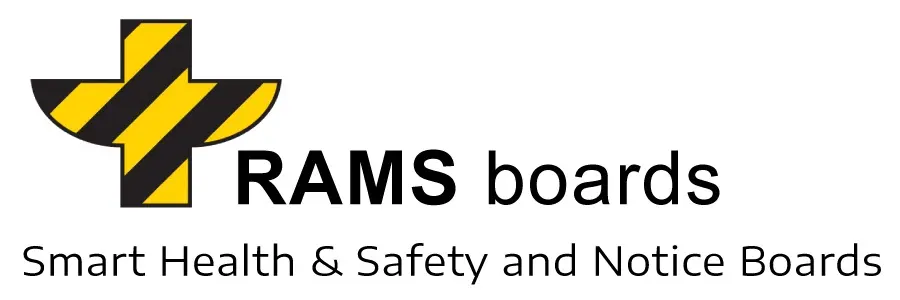A Vital Asset for Research Stations in Environmental Monitoring and Geological Survey
Research stations, especially those dedicated to environmental monitoring and geological survey, operate in some of the most remote and challenging locations on the planet. These sites, often far removed from conventional communication channels and support systems, require robust and reliable methods to ensure the safety, efficiency, and effectiveness of their operations. This is where RAMS boards have emerged as an indispensable asset.
The Unique Challenges of Research Stations
Research stations, whether they are environmental monitoring outposts in the Arctic or geological survey sites in desert terrains, face a unique set of challenges:
| Challenge | Description | Implications |
|---|---|---|
| Remote Locations | Many research stations are situated in isolated areas, far from urban centers and conventional communication networks. | This isolation can lead to logistical difficulties, communication challenges, and delays in receiving supplies or emergency assistance. |
| Extreme Environmental Conditions | Stations often face harsh climates, ranging from freezing polar temperatures to extreme desert heat. | These conditions pose risks to both personnel and equipment, requiring robust safety measures and durable materials. |
| Safety Risks | Due to isolation, harsh environments, and the nature of fieldwork, there is an increased risk of accidents and health emergencies. | Ensuring the safety of researchers is a primary concern, necessitating stringent safety protocols and emergency preparedness. |
| Dynamic Research Operations | Research projects can be highly variable, with rapidly changing objectives and methodologies. | This requires adaptable communication and safety systems that can be updated swiftly to reflect new operational realities. |
| Limited Access to Emergency Services | In remote areas, immediate access to medical or rescue services is often limited or non-existent. | Research stations must be self-sufficient in handling emergencies, with well-planned first-aid and rescue procedures. |
| Environmental Impact and Sustainability | Research activities can have an impact on the surrounding environment, necessitating sustainable practices. | Stations must balance their research goals with the need to minimize their ecological footprint and preserve the integrity of the research site. |
The Role of RAMS boards in Addressing These Challenges
RAMS boards have become a critical tool for managing these challenges effectively. Their application in research stations extends across various aspects:
- Centralized Safety Communication: RAMS boards serve as a central point for displaying essential safety information, including emergency procedures, hazard warnings, and safety guidelines. This is crucial in areas where digital communication might be unreliable or unavailable.
- Adaptability to Environmental Conditions: Their robust design makes them suitable for various harsh conditions. Whether it`s withstanding the freezing cold of polar regions or the heat of desert landscapes, RAMS boards maintain their functionality and visibility.
- Display of Real-Time Data and Updates: In dynamic research environments, quick access to the latest information is vital. RAMS boards provide a platform for displaying real-time updates on weather conditions, research findings, or operational changes.
- Enhancing Team Communication and Coordination: These boards facilitate better coordination among team members, especially in large, spread-out sites where researchers might be working in isolation or small groups.
Case Studies: RAMS boards at Research Stations
- Environmental Monitoring Outposts: At a remote Arctic monitoring station, RAMS boards could be used to display daily weather updates, safety alerts, and guidelines for dealing with wildlife encounters, ensuring that researchers are always prepared for the day ahead.
- Geological Survey Sites: In a desert geological survey site, the boards could provide crucial information on heat stress prevention, emergency contact numbers, and site-specific safety protocols, significantly reducing the risk of heat-related illnesses.
- Marine Biology Stations: At a coastal research facility, RAMS boards displayed tide schedules, hazardous marine life warnings, and protocols for water-based research activities.
The Benefits of RAMS boards in Research Stations
| Benefit | Description | Impact on Research Stations |
|---|---|---|
| Enhanced Safety | RAMS boards provide clear, visible safety information and emergency procedures. | Significantly reduces the risk of accidents and emergencies by keeping safety at the forefront. |
| Operational Efficiency | Centralized information leads to less time spent searching for updates, allowing more focus on research tasks. | Streamlines operations and ensures that staff can quickly access necessary information. |
| Customizable Content | Boards can be updated quickly to display relevant, site-specific information. | Ensures that the information is always current and pertinent to the specific needs of the research project and location. |
| Improved Communication | Acts as a hub for important announcements and updates, crucial in remote areas with limited communication. | Enhances team coordination and ensures that all staff members are informed and aligned with ongoing activities. |
| Durability in Harsh Conditions | Designed to withstand various environmental conditions, ideal for research stations in extreme settings. | Ensures longevity and reliability of the communication tool, regardless of the environmental challenges faced. |
| Boosts Morale and Compliance | Demonstrates a commitment to safety and well-being, which can increase team morale and encourage adherence to protocols. | Fosters a positive work environment and culture of safety, which is critical in high-risk research settings. |
| Eco-Friendly and Sustainable | RAMS boards are made from sustainable materials and designed to have minimal environmental impact. | Aligns with the environmental ethics of research stations, contributing to sustainable operation practices. |
Conclusion
In the world of environmental monitoring and geological survey, where challenges are as diverse as the environments themselves, RAMS boards have proven to be an invaluable resource. They enhance safety, improve operational efficiency, and provide a reliable communication platform in some of the most isolated and extreme locations on Earth. As research stations continue to push the boundaries of science in remote corners of the world, RAMS boards will undoubtedly remain a key component in ensuring the success and safety of these critical endeavours.
